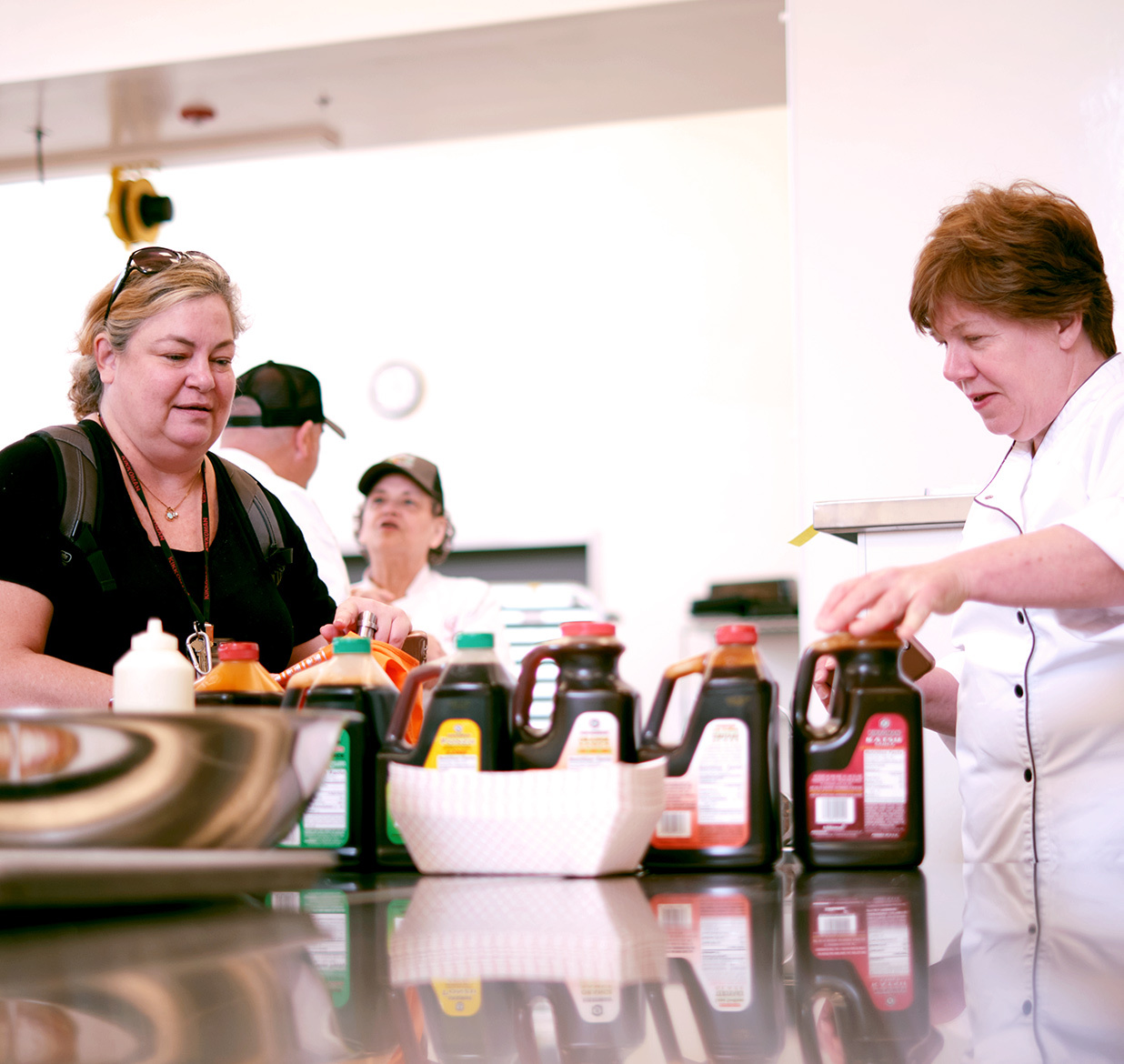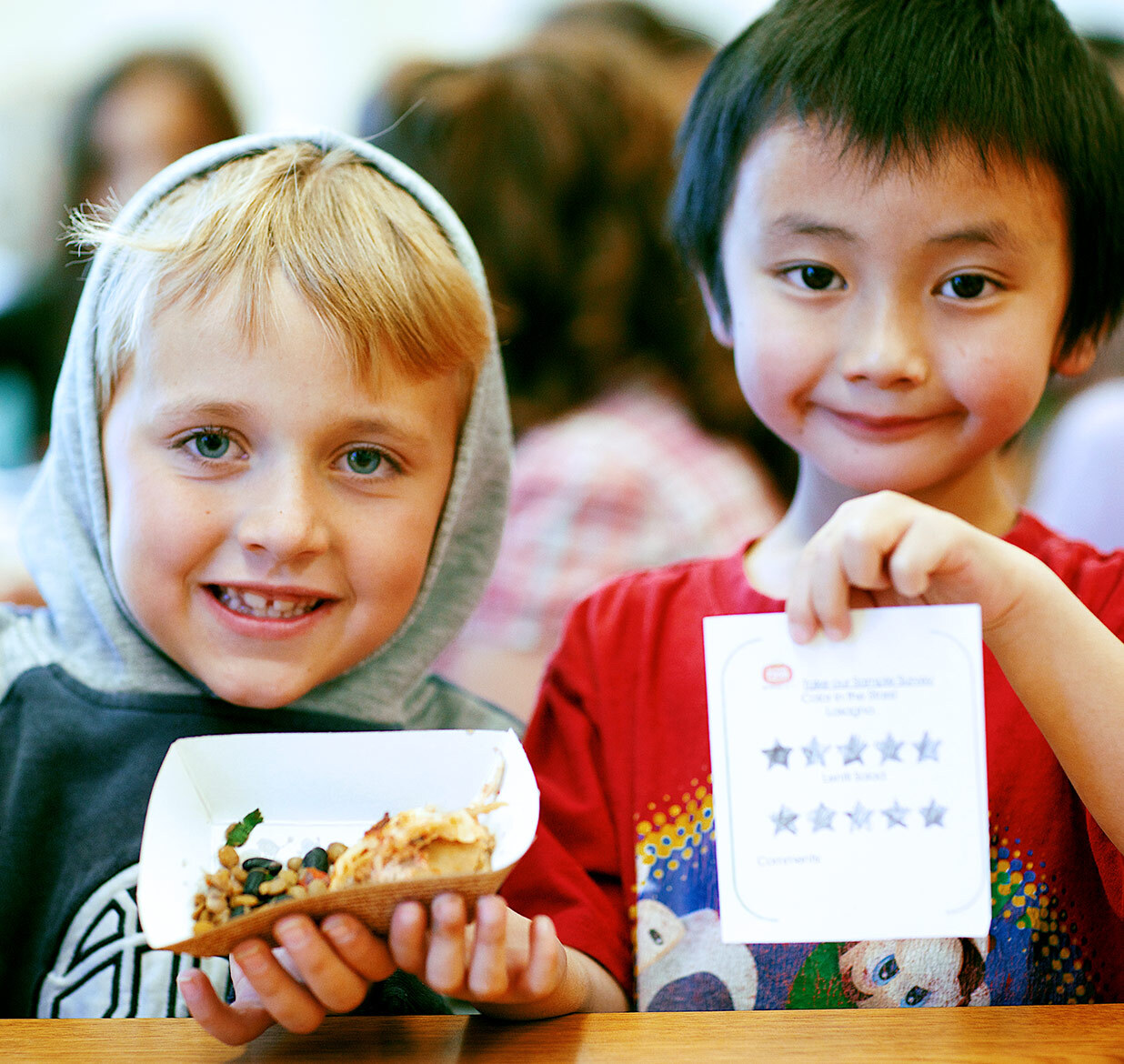
Salad Bars: Marketing Your Salad Bar
Salad bars are an excellent way to engage the community and bring awareness to your food service department’s commitment to providing fresh and healthy whole foods to the students every day. Marketing supports the long-term success of your salad bar implementation by educating students, showcasing the program to principals and teachers, and reaching out to parents and community members to support this exciting addition.

Salad Bars: Marketing Your Salad Bar
Salad bars are an excellent way to engage the community and bring awareness to your food service department’s commitment to providing fresh and healthy whole foods to the students every day. Marketing supports the long-term success of your salad bar implementation by educating students, showcasing the program to principals and teachers, and reaching out to parents and community members to support this exciting addition.
Communication
Communication with Principals and School Teams
An important part of salad bar success is informing the school administrators of the district’s new program and the benefits. We encourage directors to meet with principals to explain the implementation plan. This will assure school leadership that the food services department is prepared for the change and that it will be positive for the school. In our experience, there is little resistance from the principal and their teams when they are notified and understand how it will be integrated into the existing lunch program.
If “push-back” occurs, it often involves concern around the time it may take for students to go through the salad bar in addition to the hot line. This is why it is very important to meet with school leadership early, show how the flow of students will be affected, and “sell” the positive impact of offering the students more choice, fresher foods, and the opportunity to build a solid foundation for life-long health. If food service takes the lead in salad bar implementation, then all the other stakeholders--principals, teachers, assistant teachers, parents, and students--are more likely to be supportive.
Key Steps for Communication
- Set up individual meetings with school principals and agree on a rollout date.
- Post photos and information about the salad bar program on food service web pages.
- Distribute a press release via district communications office.
- Send information home to parents via the school network (e.g., Friday folders, newsletters, school website).
- Make announcements at PTA/PTO meetings. If well attended, set up a sample salad bar for them to experience first-hand.


Key Steps for Communication
- Set up individual meetings with school principals and agree on a rollout date.
- Post photos and information about the salad bar program on food service web pages.
- Distribute a press release via district communications office.
- Send information home to parents via the school network (e.g., Friday folders, newsletters, school website).
- Make announcements at PTA/PTO meetings. If well attended, set up a sample salad bar for them to experience first-hand.
Student Engagement
Now that your salad bar is up and running and things are going well, you can further engage students and raise participation in the cafeteria. Here’s what works:

Rainbow Days Activity
The Lunch Box offers a student activity called Rainbow Days that is very effective for increasing salad bar participation. For the best long-term results, plan Rainbow Day activities in every elementary school at least annually.
The excitement around salad bars grows tremendously with this one-day activity, which encourages kids to choose three food colors (not including white foods) from the salad bar and receive a prize once eaten; we recommend I Made a Rainbow Stickers.
The activity and supporting promotions have been put together in a step-by-step Rainbow Day Guide.
Tastings & Product Identification
Promoting salad bar participation through tasting events is a win-win. As with Rainbow Days, it is useful to place volunteers out in the dining room to assist the food service staff with student engagement. Ideas for tastings include:
- Try seasonal products
- Compare different varieties of the same item
- Taste something raw versus cooked
- Give feedback on a new salad recipe on the salad bar
Your produce vendors or local farmer contacts can be very helpful by showing up to engage the students and answer questions in a special tasting event. Regional Farm to School networks are a great resource for creating relationships with local farms and producers. “Harvest of the Month” (see Art Contests page for an explanation) is another theme that can be used to educate and support student tastings. Your State Department of Agriculture or local Agricultural Extension office is often a great resource for providing seasonality charts as well as identifying farms to engage with.
The activity and supporting promotions have been put together in a step-by-step Tastings event guide.

Parent Engagement
Parent and Caregiver Engagement
Many school districts have active parent volunteer programs. Parent and caregiver engagement can have a positive influence in the cafeteria by encouraging kids to try new foods, use utensils properly, not reach too far, and avoid spilling. Building confidence is an important part of students’ willingness to make a trip to the salad bar daily, and this is where parent volunteers can really help.
We’ve seen districts set up a parent liaison program to promote stronger communication between food services and the individual school’s parent communities. We encourage food services to have a presence at PTO/PTA meetings to help grow the relationships and encourage parents to volunteer in the cafeteria.
Recommended Next Topic: Salad Bar Tools & Resources
Here are all of the tools and resources from this section in one convenient place.
Recommended Next Topic: Salad Bar Tools & Resources
Here are all of the tools and resources from this section in one convenient place.






